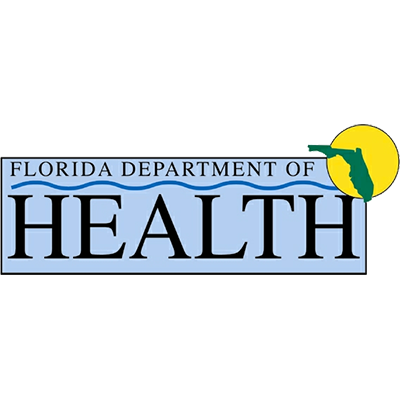Links to other resources: Veterans Program, Medical Detox at Florida Springs
Medication-assisted treatment, often shortened to MAT, has become a central part of the conversation around how to address the opioid crisis. By combining safe and effective medications with counseling and supportive care, MAT helps people stabilize and rebuild their lives. Two of the most recognized medications are methadone and buprenorphine, both proven to reduce withdrawal symptoms, cravings, and overdose deaths. While both medications play an important role in recovery, the way Florida regulates and provides access to them has shaped very different experiences for patients across the state.
Methadone Access: A Complicated History in Florida
Methadone has been used to treat opioid use disorder since the 1960s, but access to it remains tightly regulated. By federal law, methadone can only be dispensed through certified opioid treatment programs, often called methadone clinics. In Florida, these clinics are limited in number and often concentrated in larger cities. That leaves many rural communities, including areas in the Florida Panhandle, without reasonable access to methadone treatment.
This lack of availability creates barriers for patients. In some cases, people may need to travel an hour or more each day just to reach a clinic. Because methadone often requires daily supervised dosing, the time and transportation costs can make long-term recovery unsustainable. National conversations have focused on loosening restrictions to improve patient access, especially as overdose deaths remain high. However, Florida has traditionally taken a cautious stance, balancing concerns about misuse with the urgent need for better access to care.
Buprenorphine and a Different Model of Care
Buprenorphine, often prescribed under brand names like Suboxone, has expanded access to MAT in ways methadone cannot. Unlike methadone, it can be prescribed in a medical office by qualified providers, allowing patients to pick up their prescriptions at a local pharmacy. This difference has made buprenorphine a vital option for patients in communities where methadone clinics are not accessible.
At Florida Springs Wellness and Recovery Center in Panama City, buprenorphine treatment is part of a comprehensive approach to care. Patients can begin with medical detox in Panama City, then continue treatment with buprenorphine as they move into residential or outpatient rehab programs. This continuity allows for both the medical and emotional aspects of recovery to be addressed under one roof. By offering buprenorphine, Florida Springs ensures that patients do not face the daily travel burden required of methadone treatment, while still receiving a medication that is safe, effective, and backed by years of research.
The Debate Around Patient Choice
Even with buprenorphine more widely available, methadone remains an essential option for some patients. Research has shown that people respond differently to different medications, and methadone can sometimes be more effective for individuals with a long history of heavy opioid use. Limiting access to methadone may leave some Floridians without the treatment that works best for them.
This has sparked a larger policy conversation about patient choice. Should Florida expand access to methadone treatment by allowing more clinics, or by loosening rules around take-home dosing? Or should the state continue focusing on buprenorphine and newer medications that are more flexible to prescribe? The answer likely lies somewhere in the middle. Both methadone and buprenorphine save lives, and both should be accessible to patients who need them. Expanding choice could reduce overdose deaths and improve long-term recovery rates.
Florida’s Rural Challenge
One of the biggest challenges for Florida is geography. Urban centers like Miami, Tampa, and Orlando may have multiple opioid treatment programs, but rural regions, including much of the Panhandle, often have none. This is especially concerning because overdose death rates have been rising faster in many rural areas compared to cities.
Florida Springs serves a largely rural population, and many of its patients face barriers related to distance, transportation, and healthcare access. By providing buprenorphine treatment alongside inpatient and outpatient programs, Florida Springs offers a lifeline for people who might otherwise fall through the cracks. Still, the larger statewide issue remains. Without policy changes that make methadone more accessible in rural Florida, many individuals will continue to face unnecessary obstacles to recovery.
The Future of MAT in Florida
The future of medication-assisted treatment in Florida depends on finding the right balance between safety, access, and flexibility. Nationally, there is growing momentum to reform methadone policy. Federal agencies have already made changes allowing for more take-home doses during the COVID-19 pandemic, and many experts are calling for these reforms to become permanent. Florida’s response to these national shifts will shape how effective its treatment system can be.
At the same time, the role of buprenorphine continues to grow. More providers are being trained to prescribe it, and more treatment centers, including Florida Springs, are integrating it into comprehensive recovery programs. As awareness spreads, patients in Florida have more opportunities than ever to receive care that fits their needs, without being limited to one rigid option.
Florida Springs and the Path Forward
Florida Springs Wellness and Recovery Center in Panama City is committed to offering safe, effective, and compassionate care. By including buprenorphine treatment as part of its programs, the center is helping to close the treatment gap for patients in the Panhandle. With medical detox, inpatient rehab, and outpatient treatment all available in one location, patients can move through every stage of recovery with continuity and support.
By Tim Cannon



